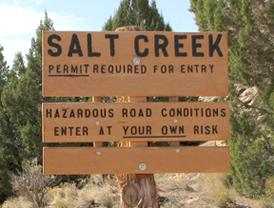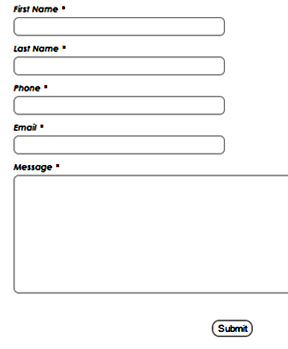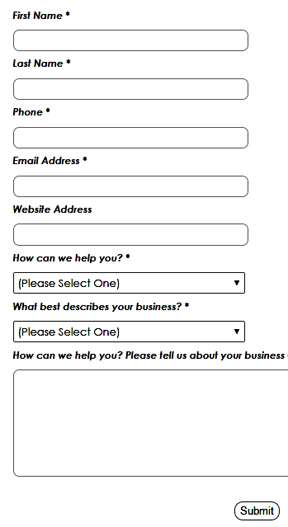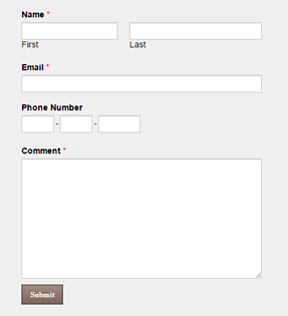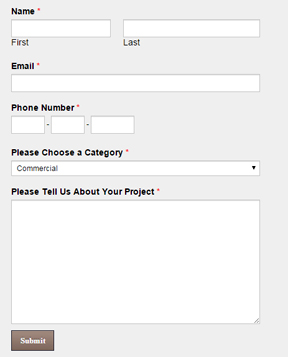Archive for the ‘Grow Your Business’ Category
Content marketing: Here’s your 3-step plan
Whether you love to write or just endure it, it’s a good time to embrace a content marketing strategy.
Do you love to write, and the words flow like water in a stream? My guess is probably not! If you’re like most people, when it’s time to write, you need to shut your office door, knuckle down, and just get it done. Yet no matter your approach to writing, you’re in luck. Why? Because producing content is the absolute key to “content marketing,” an effective marketing strategy that continues to gain traction.
Content marketing is truly enjoying its day in the sun! In fact, the Content Marketing Institute says: “It’s the present – and future – of marketing.” In other words, it’s the better way, and it’s here to stay.

Content marketing is like “going fishing” for prospects. In very simple terms, you bait the hook, stay attentive, and reel them in. Photo of fisherman at Fall River, Rocky Mountain National Park by Patrice Rhoades-Baum.
What is content marketing?
Here’s a definition from the Content Marketing Institute:
“Content marketing is a strategic marketing approach focused on creating and distributing valuable, relevant, and consistent content to attract and retain a clearly defined audience — and, ultimately, to drive profitable customer action. Instead of pitching your products or services, you are providing truly relevant and useful content to your prospects and customers to help them solve their issues.”
Put more simply: When you regularly create and distribute useful content, you can attract prospects, nurture a relationship, and drive sales.
Even if you only do a tad bit of marketing in your business, you know that writing content is part and parcel to implementing all types of marketing, public relations, and advertising strategies.
Many of my clients – solopreneurs and mid-size businesses – are actively executing aggressive content marketing strategies. Many ask me to write content for them on a regular basis. Primarily, this includes:
- Blog articles
- Email newsletter articles
- Product/service web pages
- Case study web pages
- Articles for trade publications
- Content for infographics
- Copy for marketing brochures and mailers
Working with different clients in different industries has given me insight into the many ways to pursue content marketing. Some strategies are fairly simple; some are quite robust. The end goal is the same: attract prospects, nurture a relationship, and drive sales.

Content marketing is much like fishing. Native to Rocky Mountain National Park, this greenback cutthrout trout is federally listed as endangered. Photo by Patrice Rhoades-Baum. (I did not enhance the colors of this guy – he swam into the sunlight and flashed brilliant red!)
Get started on (or improve) your content marketing strategy: Here is my 3-step plan
Whether your business is large or small, I believe there are 3 basic steps for your content marketing plan. In a nutshell, these are: (1) Write regular blog posts to attract prospects to your website. (2) Entice them with a compelling giveaway, so you can get their email address and build your list. (3) Send regular email newsletters to your list to stay top-of-mind, nurture the relationship and, over time, convert prospects to paying clients.
Keep reading … here are details for this basic, 3-step plan. Follow these tips to begin (or improve) your content marketing strategy.
1. BLOG ARTICLES – Post regular blog articles with information that is useful, relevant, and informative for your target market. Although your blog articles clearly show your expertise, they are not sales pitches. The reason to post new content regularly is two-fold: You are inviting and attracting prospects, customers, and social media connections to visit your website. Plus, adding new content invites Google’s search-engine robots to revisit your site, which can help to improve your search-engine rankings.
Tips:
- Include SEO keywords in every blog post, which helps to attract prospects to your blog and website. Identifying organic SEO keywords is simple. Here’s a quick case study: I just began teaming with an accomplished executive coach and his assistant. We quickly identified these organic SEO keywords: his full name (not just his first name) and his city as well as phrases such as executive coach, business coach, executive coaching, Vistage Chair, and so on.
- In terms of word count, Google likes 300+ words.
- Use a plugin (e.g., Yoast), which can guide you to improve your search-engine optimization, with the addition of a keyword focus, meta description, and more.
- Use your social media sites to announce the new article to your fans, friends, and followers. This invites folks to your website/blog to read the article.
- I like to include brief blog articles with photos on topics of personal interest. Examples include highlights of hiking adventures, archaeological field trips, and roadtrips throughout the Southwest. This has been a fun and rewarding way to truly connect with many like-minded people around the world.
2. OPT-IN BOX – Ensure your blog has an opt-in box in the margin, so you can capture visitors’ email addresses. The opt-in box must have a compelling, free giveaway item (aka lead magnet, opt-in bribe, or freemium). Here’s the reason to create a hardworking opt-in box: This simple tool helps to build your list. This enables you to stay in contact with prospects and grow your relationship.
Tips:
- You can have one main opt-in box in the margin of your blog. Better yet, each blog article can have a brief corresponding worksheet that is downloadable via that particular blog article’s opt-in box.
- Place an opt-in box on all pages of your website, not just on the blog and Home page. In fact, consider having opt-in boxes with different giveaway items on various web pages to entice prospects who are interested in your various products and services.
- Ideally, when someone opts-in, they should receive several autoresponder emails that offer additional, valuable information. This helps to create a trusting relationship. Keep the focus on giving value rather than sell-sell-sell.
- In the opt-in box, consider asking for ONLY the email address – not first name, last name, city, company, and other information. Marketing data shows that conversion rates improve when less information is required.
- Ask your assistant or website developer to ensure the email address is automatically entered into your email newsletter database (e.g., MailChimp or Constant Contact).
- If you’re implementing a pay-per-click (PPC) advertising strategy, the ad’s link should take prospects to a landing page with an opt-in box and compelling giveaway item. (Place the same opt-in box at both the top and bottom of the landing page.)
- Here are 10 example giveaway items:
– Infographic (these appeal to prospects due to instant gratification)
– Webinar
– Video
– Recorded interview
– Worksheet
– Tipsheet
– Checklist
– Set of templates
– eBook
– White paper
3. EMAIL NEWSLETTER – Send a weekly or monthly email newsletter. The primary reason is to stay top-of-mind with your prospects and customers. Ideally, many prospects will eventually convert to paying clients. Plus, many clients will return to purchase your products and services.
Tips:
- Primarily, the content should add value, not sell.
- You can certainly promote new products, services, special offers, and so forth. And, of course, you can include links to your website.
- Consider creating an editorial calendar. This step can help you develop more sophisticated email campaigns to support your product funnel and drive the sales process.
All the above steps assume that the website content is up-to-date, particularly when it comes to brand messaging, products, services, and case studies. In fact, I encourage you to keep your website content as current as possible. (If you need help, give me a holler.) Your up-to-date website is the hub of all marketing activities.
Follow this basic 3-step content marketing strategy to attract prospects, nurture the relationship, and drive sales.
Read More...
Productivity tips for small business owners: These 7 calendaring tips add productivity (and sanity) to your week
Is every week crazy-busy?
How can you add productivity – and sanity – to your week?
There’s an old saying that goes (roughly): “Sometimes you get the bear; sometimes the bear gets you.” When you’re crazy-busy, it can feel like you’re being chased by a bear – and it’s gonna get you! Often, feeling crazy-busy goes hand-in-hand with feeling stressed.
After a 25-year corporate marketing career and 10+ years owning a business, I’ve discovered that being organized goes a long way toward reducing stress and being productive. Today, as a marketing/branding consultant and copywriter for websites, blog posts, speaker one-sheets and more, I have a lot of plates spinning.
Taking time for “calendaring” helps to ensure my week is sane, organized, and productive. Calendaring helps to ensure you never miss a meeting and always complete projects on time. That’s why calendaring is one of my favorite productivity tips for small business owners.
If you spend time wading through emails and stacks of paper searching for details, are late for meetings, and stress over deadlines, then I encourage you to give these calendaring tips a try. Wouldn’t it be great to get on top of details and deadlines? Wouldn’t it be great to get the bear?
Let’s follow the “Who/What/When/Where” approach to discuss this productivity topic.
WHO: Every busy person including solopreneurs and small business owners who could add a bit of productivity (and sanity) to their lives. In fact, calendaring is one of my favorite productivity tips for small business owners, because it make a big difference in your quality of life.
WHAT: Take time for calendering every week. To me, it means carving out time to sit down, take a breath, and create a complete to-do list for the upcoming week. This starts with organizing all events in your calendar (whether it’s paper or electronic). Mark down all appointments, note all project deadlines, list priority action items, and so forth.
WHEN: I reserve time every Monday morning to organize my week. It can take a couple of hours! Do your Mondays start with “ready, set, go”? If so, consider taking time for calendaring on Friday afternoon for the upcoming week. If necessary, do this over the weekend.
WHERE: This activity requires focus – and having information and office tools at hand. I encourage you to do your calendaring at your desk in your office. That way, you have all tools handy: your phone, computer, email, electronic or paper calendar, pens, highlighters, etc.
HOW: When it comes to calendaring, here are my favorite productivity tips for small business owners:
- Create ONE list for the whole week; identify daily action items and milestones – Take time to create a complete to-do list for the upcoming week (either on paper or electronically). This includes identifying tasks and projects you MUST complete as well as those you HOPE to complete. Calendaring takes this a step beyond jotting down a simple to-do list. Whether your calendar is electronic or paper, take time to identify action items to tackle on specific days. Believe me, when you create a thorough, day-by-day action list that’s integrated with your calendar, all sorts of details will pop into your brain … important details that may otherwise get overlooked. Plus, there’s a good chance you’ll step up your productivity.
- Schedule “meetings” with yourself – Do you have a long-term project on your plate? Often, business development activities and long-term goals that are important do not have concrete or looming deadlines. Set aside time to get it done! Put this appointment in your calendar, and don’t skip it. A good example is dedicating a portion of every Monday to be “Marketing Monday” to promote and grow your business.
- At the end of every day, take time to wrangle loose ends – Write down all appointments, tasks, notes, reminders, and deadlines for the next day. Capture all details. Otherwise, these “gremlins” may wake you up at 2:00 in the morning.
- Include personal tasks on your master list – Let’s say your anniversary is next week, and you need to call in reservations at your favorite restaurant. Better make a note. Or perhaps you’re hosting a friend’s birthday party at your house. Don’t forget to order the cake. When calendaring, include important action items related to personal projects.
- This is a good opportunity to clear off your desk – While calendaring, take time to file papers, address sticky notes, and check unread emails for surprise action items.
- Send a reminder/confirmation email to meeting participants – For meetings that have been set up for the week (either in-person meetings or conference calls), send a reminder email to the participants. This helps to ensure the meeting happens as planned, and the project moves forward.
- Set alarms in your smartphone – You can set up alarms to alert you to certain high-priority activities such as meetings and doctor’s appointments. (Don’t go overboard.)
WHY: Carving out time to get organized actually buys you more time! Taking time for calendaring helps to clear your mind, reduce stress, and tackle priority projects. Without question, it makes you more productive. And you’ll be on top of details and deadlines!
Imagine no more searching for lost files, being late for important meetings, or missing project deadlines. Investing just a bit of calendaring time every week can truly add productivity – and sanity – to your work week.
This is why calendaring has become one of my favorite productivity tips for small business owners.
Read More...
I’m honored to receive NSA/Colorado’s “Sabah Award”
![]()
Look what happens when you pull together a group of talented people with a vision…
Add inspiration. Toss in a hefty serving of dedication. Then stir it up for about 30 years!
You get NSA/Colorado – one of the most robust chapters in the National Speakers Association. (Actually, we think we’re the BEST chapter!)
More than 30 years ago, Joe and Judy Sabah formed the Colorado Chapter of the National Speakers Association. (Click HERE to learn more about the chapter’s history.)
During the May 6 end-of-year celebration, I was honored to receive the “Sabah Award” for serving NSA/Colorado – a vibrant group of can-do entrepreneurs.
Here’s a big “thank you” to my fellow members serving on the Board of Directors, everyone who steps forward as a volunteer, and to all our members.
Let’s stir things up for another 30 years! :>

Patrice Rhoades-Baum is the 2016 recipient of the NSA/Colorado “Sabah Award,” pictured here with Judy Sabah & Joe Sabah, founders of the Colorado Chapter of the National Speakers Association.
Read More...
Get customer testimonials: 5 ways to ask for – and get – GREAT testimonials
It’s important to get customer testimonials – this helps you get new clients.
Testimonials are social proof. Testimonials from your clients prove that your expertise makes a difference. That’s why it’s critical to get customer testimonials, and include them in your website, speaker one-sheet, and other marketing tools. Testimonials DO help to win new clients.
But it can be challenging to get customer testimonials!
Your clients love teaming with you. When you ask for a testimonial, they happily agree. BUT …
- They are crazy-busy, and they don’t get around to it.
- It’s awkward to keep reminding and pestering them.
Sound familiar? You’re not alone! This is a universal challenge for solopreneurs and small business owners.
Here’s the problem: You are giving them an action item.
When you ask for testimonials – and they agree – you are giving clients an action item. They intend to write a glowing testimonial for you. However, that action item is not a high-priority task. It may literally get lost in a sea of scribbled notes on their desk!
Here’s the solution: 5 ways to ask for – and get – customer testimonials.
1. Jot down notes when clients rave, then write the testimonials for them – This is my favorite way to get customer testimonials. Often, a client will enthusiastically share comments when we’re on the phone together, such as “Your marketing advice hit the nail on the head…” When your client gushes, grab a pen and jot down notes. You can polish the comments a bit, then email the testimonial and ask for permission to use it.
2. Convert emailed comments into a testimonial – Client thank-you notes make great testimonials! Sometimes, you may need to edit an email thank-you note to transform it into a hardworking testimonial. If so, write the draft testimonial and ask your client to review it. Often, clients will elaborate on the comments and give you an even better testimonial.
3. Request an audio testimonial – Schedule a 10-minute conference call with your client and use the “record” function. Then you (or your assistant) can conduct a brief interview. Add the audio interview on your website’s “Testimonials” page, along with a written snippet or the full transcript.
4. Call and ask for a testimonial, on the spot – This tip is especially useful when you’re updating your website. Simply call your clients, explain that you’d love a testimonial, and ask if they have a minute. Then discuss the project’s results while you write (or type) notes. Edit your notes into a brief testimonial. Ask clients if they want to read and approve the written testimonial.
- Bonus #1: You’ll get enough information to write a case study.
- Bonus #2: You’ll reconnect with “old” clients. You can rekindle your relationship and possibly identify new opportunities to work together.
5. If you’re a speaker, include a testimonial request in your contract – Professional speakers often include a note in their contract, requesting that the meeting planner provide a testimonial after the event. Of course, immediately after your talk, you can capture attendees’ rave reviews on your smartphone’s video camera.
BONUS idea for those who present workshops – Do you give evaluation forms to workshop participants? If so, ensure the form asks questions in a manner that elicits usable testimonials. In other words, you might ask questions such as:
- “What is the most important thing you learned from this workshop?”
- “When you get back to your office, what ONE change will you make?”
- “With the advice you learned today, how will you change the way you do X?”
Use these methods to overcome the challenges to get customer testimonials.
Great testimonials help to win new clients!
Read More...
Should you change or edit client testimonials? YES! Edit to polish and add value.
Have you he ard this advice: “Never change or edit client testimonials.” Not true! You SHOULD edit testimonials so they’re professional and add value. You can polish and edit client testimonials with a light touch. Just be careful not to change the meaning.
ard this advice: “Never change or edit client testimonials.” Not true! You SHOULD edit testimonials so they’re professional and add value. You can polish and edit client testimonials with a light touch. Just be careful not to change the meaning.
Use this checklist to edit client testimonials:
- PROOF – It’s vital to fix typos and punctuation issues. This helps to ensure your website and other marketing tools are polished and professional.
- SHORTEN – Brief testimonials get to the point and are easy to read. Trim long testimonials to 3-5 sentences. Yes, this means sacrificing content. But that’s better than loooong testimonials, which cause readers’ eyes to glaze over.
- REWORK (IF IT’S CONFUSING) – If a testimonial contains good content but is confusing or poorly written, consider rewording key sentences. Be careful not to change the meaning or the person’s intent. Then email the revised testimonial to your client for approval.
- ORGANIZE – I like to place testimonials with the most impact at the top of the website’s “Testimonials” page. When you organize client testimonials, alternate testimonials that address similar challenges.
- INCLUDE LOCATION & MORE – Make every testimonial work hard for you! Include the person’s full name, title, organization, and city/state or state/country. If your business is international, your testimonials from various countries prove that you work with clients around the world. Consider adding the client’s photo, if this is appropriate for your business. Also, if there are privacy issues (e.g., the healthcare industry) don’t publish the person’s full name. Instead use the first name only or initials only.
- ADD SEO KEYWORDS – When you edit client testimonials, sprinkle in organic SEO keywords. For example, if your name is Jane Doe and you’re a business coach, you can do this:
Replace this statement: “Jane guided me to…”
With this statement: “As my business coach, Jane Doe guided me to…” - MAKE A BOLD STATEMENT – Your website visitors (your prospects) don’t read every word on your website. They skim. That’s why I select one sentence in every testimonial and make it bold.
Take time to edit client testimonials. This adds professionalism to your marketing tools – and adds value for your business.
Read More...
Clarity is rocket fuel! Here’s a great way to LAUNCH your New Year – take a peek at my 2016 branding consulting package
Branding consulting for solopreneurs:
CLARITY IS ROCKET FUEL!
Your cle ar brand is the launchpad to promote and grow your business. My “Nail Your Brand” 2016 branding consulting package is a great way to LAUNCH your New Year.
ar brand is the launchpad to promote and grow your business. My “Nail Your Brand” 2016 branding consulting package is a great way to LAUNCH your New Year.
When chatting with my clients (and in my “Nail Your Brand” workshops), I often field the following questions. Are YOU struggling with these Qs?
- “How do I differentiate my business from my competition?”
- “How do I communicate what I do? My elevator speech is all over the place!”
- “Who’s my target market? Should I niche or keep my options open?”
Clarifying your brand in my FAST branding consulting process automatically answers ALL these questions.
Your clear brand will provide a solid foundation – the launchpad! – to promote and grow your business. And better yet, you’ll discover that clarity is rocket fuel! Armed with a clear brand, you’ll tap into a wellspring of focus and energy.
Here’s my definition of branding…
Your crystal-clear brand quickly tells your prospects:
- Who you are
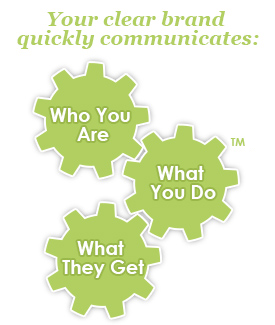
- What you do
- What they get (the benefits and results your clients receive)
Introducing my “Nail Your Brand” 2016 one-on-one branding consulting package.
At-a-glance, here’s what you get:
- Together, we clarify your brand – You gain clarity about the unique expertise you offer and your target market. We discuss the many benefits your clients receive (and audience members if you’re a professional speaker). And we identify THE TOP benefit your clients receive. Next, we identify your Brand Elements™ including your tagline.
- Your customized “Nail Your Brand” document – This detailed document serves as a touchstone for you AND all your vendors: designer, copywriter, editor, social media consultant, etc. It also guides them to apply your Brand Elements™ consistently in all marketing tools: website, speaker one-sheet, PowerPoint presentations, workshop handouts, social media profiles, and so forth.
- Detailed instructions for your developer – Use this fully customized document to team with your developer to update your current website. Or use it to create an entirely new website that more powerfully promotes you as the expert you are.
- Your new elevator pitch – You get a crisp, clear, compelling (and brief!) elevator speech. This empowers you to comfortably and clearly verbalize “who I am, what I do, and what my clients get.”
Your clear brand is the rocket fuel to promote and grow your business. It’s time to get clear – and get energized!
This branding consulting package is a great way to LAUNCH your New Year.
Click HERE to schedule your free 30-minute consultation.
Read More...
What’s your theme for this new year?
Think of a theme for the year – a meaningful phrase to stay focused.
Business plans are important, but they are chock-full of details. A theme, on the other hand, is simply a word or phrase that is…
- personal and inspiring
- meaningful and memorable
- a touchstone (like having a lucky coin in your pocket, always at your fingertips)
What’s your theme for this new year?
Take a moment … give it some thought.
- What do you want to accomplish this year?
- What changes do you want to make in your personal or business life?
- What Big Goal will you accomplish by December 31, 2016?
- What word or phrase encapsulates these aspirations?
- What word or phrase would inspire you to stay focused and energized?
![]() Here’s my theme for this year:
Here’s my theme for this year:
“STEP UP”
I’m planning to really stretch my business (and myself) this year. Reaching Big Goals requires me to STEP UP, more than ever before.
Still thinking about your theme?
This could be your “LEAP YEAR.”
The calendar shows that 2016 is a leap year. Do you have Big Goals for the year? If so, this could literally – and metaphorically – be your LEAP YEAR.
Here’s to 2016 – a year to achieve Big Goals!
Read More...
How to create a Project Plan: Here are the steps and a Project Plan template to get your project done!

Are you ready to tackle that big project?
Is this your year to roll out a new product?
Introduce a new service?
Update your website?
Promote an online training program?
Develop a new workshop or keynote?
Recently, one of my Mastermind partners quizzed me about Project Plans. She knows I’ve relied on Project Plans for years – more than 3 decades, actually – to bring large, complex projects to fruition.
In my 25-year corporate marketing career…
I created Project Plans to organize $100,000 tradeshow events, to manage corporate websites with $250,000 budgets, and to research and write a case study printed in Fortune magazine.
In my 10 years as a marketing consultant and branding expert…
I created Project Plans to develop and launch new services and products, create webinars and workshops, and lead a significant revamp of my website.
What’s my “secret”? Create a Project Plan – a simple, strategic tool.
Decades ago, when I stepped into the role of Marketing Communications Manager at a high-tech corporation, I learned how to juggle a host of projects. On any given day, deadlines competed for my attention: company websites, newsletters, direct-mail campaigns, email campaigns, print ad campaigns, public relations efforts, and logistically intensive tradeshow events.
Every project had multiple milestones and, all told, an army of copywriters, designers, website developers, and other team members.
It was understood that deadlines would be met – never missed. So I created a Project Plan template and mastered using Project Plans.
~ ~ ~
Follow these 10 steps to create your Project Plan – using my Project Plan template – and you will complete your project.
Step 1.
As with any strategic activity, creating your Project Plan requires concentration. Set aside time. Minimize distractions and interruptions, so you can stay focused.
Step 2.
Click to download my Project Plan Template. Save the downloaded Microsoft Word document in an appropriate folder on your computer. At the top of the document, type the name of ONE project to complete. For example: “Create content for a new workshop.” Use one Project Plan per project to avoid confusion.
Step 3.
In the “Activity” column, type a list of every task involved in your project, from start to finish. Keep each task description brief. (Long descriptions can get confusing and overwhelming.)
Step 4.
In the “Persons Responsible” column, type the name of the person(s) responsible for completing each task, even if it is you.
Step 5.
Check the chronological order of your task list. Move rows to organize the tasks, as necessary.
Step 6.
Review the task list to ensure it’s as thorough as possible. Creating a detailed task list helps to clear up “fuzziness” about specific steps involved to complete your project. Keep in mind: Clarity is the enemy of procrastination!
Here’s an example to ensure your list is thorough:
Let’s say you plan to create an outline for your new workshop and want your Mastermind partner to review it and give feedback. There are actually 4 different tasks that, most likely, would happen on 4 different days. Therefore, your Project Plan would list the following 4 discrete tasks, with the person responsible:
- Create outline, give to MM partner [Me]
- Review outline [Mastermind partner]
- Meet to discuss feedback [Me and Mastermind partner]
- Finalize outline [Me]
Step 7.
Now it’s time to set the project’s completion date. Print your in-progress Project Plan. Grab a pencil and eraser. In the last row showing the last task on your list, write down a date in the “Due Date” column.
Here are tips:
- For our “create new workshop” example, this would be a hard-and-fast deadline if you have committed to present this new workshop at a conference or corporate event.
- If you don’t have a “drop-dead” date for your project, choose a target completion date.
- Do not skip this step! Setting a target completion date is a critical step to (a) commit to your project, (b) finish your project.
Step 8.
Now it’s time to identify a due date for each task. Grab your in-progress Project Plan, pencil, eraser, and a paper calendar. Consider printing your Outlook calendar, which would show scheduled out-of-office dates. Whatever you use, consider it a “scribble calendar.” (You’ll see why in a minute.) Starting at the bottom of your Project Plan, identify a completion date for each task.
Here are tips:
- I like to mark each task’s completion date in the “Due Date” column AND scribble the task on the calendar. If you start seeing too many substantial tasks loaded into one week on the calendar, it’ll be clear that you need to adjust dates for some of your tasks.
- Work your way up to the very first task in your Project Plan.
- Erase and adjust due dates for each task, as necessary.
- If you started by identifying a target completion date (as opposed to a firm “drop-dead” date) and find that you’ll need more time to finish your project, you can move the completion date by a week or two, then adjust all task due dates accordingly.
- Remember: The goal is to identify reasonable due dates that you can meet, week after week.
- You may want to identify key milestones. For example, it may be critical to give the workshop outline to your Mastermind partner by a certain date, prior to his/her extended vacation.
- For lengthy and complex projects, I like to build in contingency time. Often, I’ll include a 1-week task that is simply called “Contingency.”
- Many tasks in your Project Plan must be completed by others on your team (virtual assistant, designer, website developer, etc.). Be sure to contact them to ask about their availability. You don’t want to discover, late in the project, that your website developer will be on vacation for 2 weeks, just when you need him/her.
- When you’re done writing due dates for each task on your printed Project Plan, type the dates into your Microsoft Word document to finalize your Project Plan. I like to print my completed Project Plan, then place it in a binder or folder, so I can refer to it often. (Over the course of the project, I scribble lots of notes and sometimes adjust dates.)
Step 9.
Place each task’s due date in your Outlook calendar, day planner, or other scheduling system that you use. Be sure to indicate how much time the task requires. This way, when you schedule other activities and meetings in your calendar, you won’t over-pack your week and over-commit your time.
Here are tips:
- You can schedule a meeting with yourself to accomplish each task. This ensures you have set aside time to address your tasks, so they don’t get pushed to evenings and weekends.
- Once a task has been completed – on the printed Project Plan – I like to highlight it or cross it out. That gives me a great deal of satisfaction! You can also put a checkmark next to tasks, as you complete them.
- Give your Project Plan to team members who are responsible for specific tasks. Ask them to schedule time in their calendar to address their tasks on or before the due dates. Often, a team effort is required to complete a project, even if you’re a solopreneur. To complete the project on time, all team members must complete their tasks on time.
Step 10.
This is less of a step, and more of a MINDSET. Every task’s due date is a commitment that you make to yourself. Give each task the time – and priority – it deserves. Meet each task’s due date, and you will successfully complete your project on time.
Click to download my Project Plan Template.
Have questions? Need help?
I’m happy to guide you through the process to create your Project Plan! Send an email, and we’ll set a time for a consultation: Patrice@BrandingAndWebsites.com
Read More...
“See you at Peekaboo!” (thoughts on why – and how – to clarify your Big Why?)
We were in middle-of-nowhere Utah…
Soon, our archaeology buddies would emerge from the canyon, wrapping up their 5-day backpacking trip. As arranged, Mike, Paul, and I were picking up Laurie and Terry’s sizable SUV at their starting point. Our mission was to transport the truck and rendezvous at their exit point: Peekaboo Camp.
I climbed into the massive vehicle and slid the key into the ignition. That’s when I saw a note on the seat, scribbled on an old envelope:
Mike and Patrice,
The road to Peekaboo Camp is actually a creek, running high right now.
The ranger said to drive on the right size of the creek – the left side is QUICKSAND.
See you at Peekaboo!
L & T
Drive up a flowing creek? Avoid the quicksand?
Cool!
This roadtrip encompassed all the adventure I love: high-adrenaline four-wheel driving, scrambling on cliffs to hunt for ancient rock art (petroglyphs and pictographs), dramatic Southwestern vistas, and lots of camaraderie, to boot.
Outdoor adventures – big and small, near and far – light my brain on fire and make my heart sing!
For me, ADVENTURE is a “Big Why?”
While creating my 2016 business plan, I listed multiple drivers. Front and center is ADVENTURE. I realized this is one of my answers to the question: Why build your own business?
- I love guiding business owners to clarify their brand. I believe clarity is the rocket fuel to promote and grow your business.
- I love that my business gives me the independence, empowerment, and success I simply could not achieve in the corporate world.
- And I love that Mike and I continue to carve out a life that is invigorating, fulfilling, and adventurous.
What is YOUR “Big Why?”
Did you know 2016 is a leap year? Metaphorically, this could be an important LEAP YEAR for you and your business. At the heart of it all is knowing your “Big Why?”
Here are 3 questions to clarify your “Big Why?”
- Regarding quality of life: What is the lifestyle you want to live? What does it look like? Take a few moments to draw a picture, create a vision board, or jot down a list of activities that, together, create a healthy, fulfilling, well-rounded life for you and your family.
____________________________________________________________________________________________
____________________________________________________________________________________________
____________________________________________________________________________________________
____________________________________________________________________________________________ - Regarding servicing your clients: What is the unique expertise you deliver to your clients (and audience members if you’re a speaker)? As a business owner, you are an expert – you bring a distinctive combination of experience, expertise, and new ideas to the table. Write down the unique expertise you deliver. (Hint: Clarity on this point helps to clarify your brand.)
____________________________________________________________________________________________
____________________________________________________________________________________________
____________________________________________________________________________________________
____________________________________________________________________________________________ - Regarding building your business: What is the “fire in your belly”? Every morning you get up, ready to fight the good fight. What energizes you? Is it serving clients in need? Earning more money? Creating a better life for your family? Sharing your expertise and growing your reputation? Write down the fire in your belly:
____________________________________________________________________________________________
____________________________________________________________________________________________
____________________________________________________________________________________________
____________________________________________________________________________________________
In a few words, can you express your “Big Why?”
___________________________________________________________________________________________________
___________________________________________________________________________________________________
Clarity is the rocket fuel to promote and grow your business – and to create the quality of life you desire.
~ ~ ~ ~ ~ ~ ~ ~ ~ ~ ~ ~ ~ ~ ~ ~ ~ ~ ~ ~ ~ ~ ~ ~ ~ ~ ~ ~ ~ ~ ~ ~ ~ ~ ~ ~ ~ ~ ~
Pictures at Peekaboo Camp
Read More...
How do you get qualified leads from your website? Up-level your CONTACT form to an INQUIRY form
GET QUALIFIED LEADS. Clearly, this is a top goal for your business website.
In fact, from a marketing/sales perspective, most of us have 3 key goals for our website:
- Build the list with quality prospects
- Sell products and services directly via the website
- Get qualified leads from your website in order to sell products and services
Sometimes minor tweaks to your website can reap great rewards. One is transforming your basic CONTACT FORM into a hardworking, strategic INQUIRY FORM.
Use this checklist to get highly qualified leads:
- Have two different fields for First Name and Last Name (not just one field for Name).
- Ask for Email Address and Website Address.
- If you do business internationally, change the “Phone” field to “Phone/Skype.” Ask your website developer to ensure this field accepts numbers and letters, with room for at least a dozen characters.
- Add at least one question – with a drop-down list or radio buttons – that empowers the prospect to provide specific information that helps you qualify the lead. You may want to include multiple questions. For example, inquiry forms for professional speakers often request event date, location, and length; audience size and demographics; topic choice; and so forth.
- Make all important fields mandatory. However, if your form is lengthy, don’t make all fields mandatory. The prospect may lose interest and not complete the form.
- Make your Comment box work hard for you. Instead of asking for “Comments” or “Give us your feedback,” ask a direct question that encourages your prospect to provide useful information. For example, my inquiry form says: “How can we help you? Please tell us about your business – and how we can be of service.”
- When prospects hit “Submit,” they should automatically be taken to a thank-you page (aka Success Page). NOTE: Your prospects just took a BIG step forward in your relationship. You must ensure the content on this page is warm, friendly, and customized – not a basic template page with a skimpy, impersonal “thank you.” In your copy, add a note that you (or someone on your team) will follow up with a personal contact. On this page, consider adding: SEO keywords in the content, your scanned signature beneath a personal note, a photo to add warmth and personality, a prominent button/link to the Home page.
- Test your revised form to ensure the entire process works properly, including the fact that you (or your assistant) must receive an email notification with all information. NOTE: Thoroughly test your form by entering wrong information and intentionally making mistakes. Do the error messages work? Is the wording in the dialog boxes accurate and friendly – or cryptic and techie?
- Ask your developer to ensure the prospects’ names/email addresses are automatically added to your email database system: AWeber, Constant Contact, MailChimp, Infusionsoft, etc.
- Treat your qualified leads with the importance they deserve. Shockingly, some businesses do not have an efficient process to follow up on website-generated leads. They allow these valuable inquiries to gather dust. Meanwhile, those qualified prospects will go elsewhere to find the products and services they need.
Your website is your most powerful marketing tool. Yes, you want to get leads. Better yet, you want to get QUALIFIED leads from your website, via a hardworking and strategic INQUIRY form.
~ ~ ~ ~ ~ ~ ~ ~ ~ ~ ~ ~ ~ ~ ~ ~ ~ ~ ~ ~ ~ ~
Here are 2 examples where I have transformed a basic CONTACT FORM into an INQUIRY FORM.
Example #1 – Before and After
Example #2 – Before and After


